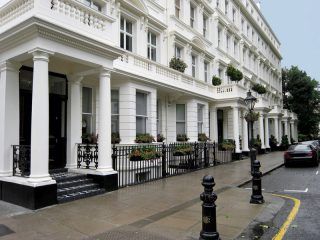Over Half of £1m+ Property Purchases to Take Place Outside London for First Time
Rising house prices, coupled with a slowdown in the capital, means that over half of £1m+ property purchases are set to take place outside of Greater London for the first time on record this year, according to a new study by independent mortgage broker Private Finance.
Analysis of Land Registry data for England and Wales shows a 195% rise in residential transactions valued at £1m or more between 2011-16. Total transactions rose by 54% over the same period, meaning that the volume of £1m+ property purchases grew almost four times faster than the overall market.
This trend continues, despite a slowdown in activity at the top end of the market following successive reforms to Stamp Duty in December 2014 and April 2016. The continuing rise of house prices across much of the country has meant that £1m+ transactions still rose by 10% between 2015-16.
Six areas outpace Greater London between 2015-16

Over Half of £1m+ Property Purchases to Take Place Outside London for First Time
Historically, the majority of £1m+ property purchases have taken place in Greater London, which enjoyed a 63% share of the higher end market in 2011. London also recorded by far the largest growth (7,333) in the annual volume of £1m+ sales between 2011-16. Surrey ranked second (818), followed by Hertfordshire (676) in third.
However, Private Finance’s analysis shows that this may be about to change, due to the sizeable increase in £1m+ property purchases outside the capital in recent years. From 2015-16, growth in £1m+ transactions in Greater London was outpaced by six other areas: Hertfordshire, Surrey, Essex, Hampshire, Kent and Greater Manchester.
If this trend continues, more than half (51%) of £1m+ property purchases will take place outside of Greater London in 2017 for the first time on record.
This may prove a conservative forecast, however, as the latest official house price figures show that house prices are currently rising faster year-on-year in six English regions (the East of England, South West, West Midlands, South East, East Midlands, and Yorkshire and the Humber) than in London.
Across England and Wales, Private Finance’s analysis shows some of the greatest proportional increases in £1m+ property purchases since 2011 have taken place far away from the capital. Between 2011-16, the volume of £1m+ residential transactions rose by a whopping 4,800% in South Yorkshire and 2,600% in County Durham and Swindon. Meanwhile, the biggest percentage increase in £1m+ sales from 2015-16 was in Carmarthenshire (1,200%).
Trends in £1m+ mortgages
Data from Private Finance for mortgaged purchases in the £1m+ market over the five-year period between 2011-16 shows that the average loan-to-value (LTV) was 54%, rising to 56% last year. This suggests that homebuyers in this sector are leveraging substantial amounts of their assets as six-figure deposits.
Between July and December 2016, there were significant declines in average mortgage rates, passing monthly savings to borrowers. Private Finance’s best buy three-year fixed rate mortgage dropped from 1.79% to 1.49%, while the best buy five-year fixed rate mortgage fell from 1.99% to 1.83%. There were also declines for borrowers looking at fixing their mortgages for longer; Private Finance’s best buy ten-year fixed rate product decreased from 2.79% to 2.39%.
The Director of Private Finance, Shaun Church, comments on the findings: “Sustained house price growth in London means that even for many highly paid professionals, a large family home in the capital is now out of reach. With buyers looking further afield as a result, this has contributed to significant growth in the number of £1m+ transactions in areas like Kent, Essex and the Home Counties, which are all within easy commuting distance of London.
“Buying a £1m+ property is a significant financial commitment and, with increasing numbers of buyers falling into this category, borrowers may need to look to private banks and brokers to ensure they are able to access appropriate mortgage finance. These tend to offer a more bespoke, flexible service. For example, buyers might leverage unconventional assets like jewellery, fine art or sports cars as a means of obtaining their property. The lender will take into account how liquid the assets are and make a judgement as to whether the borrower could sell an item to repay the loan.”
He adds: “Private banks are also able to offer interest-only mortgages to such clients, giving them greater choice about when they want to repay chunks of capital, such as if they get an annual bonus. This type of flexibility can prove invaluable in ensuring borrowers can access the most affordable and suitable mortgage finance for them.”
